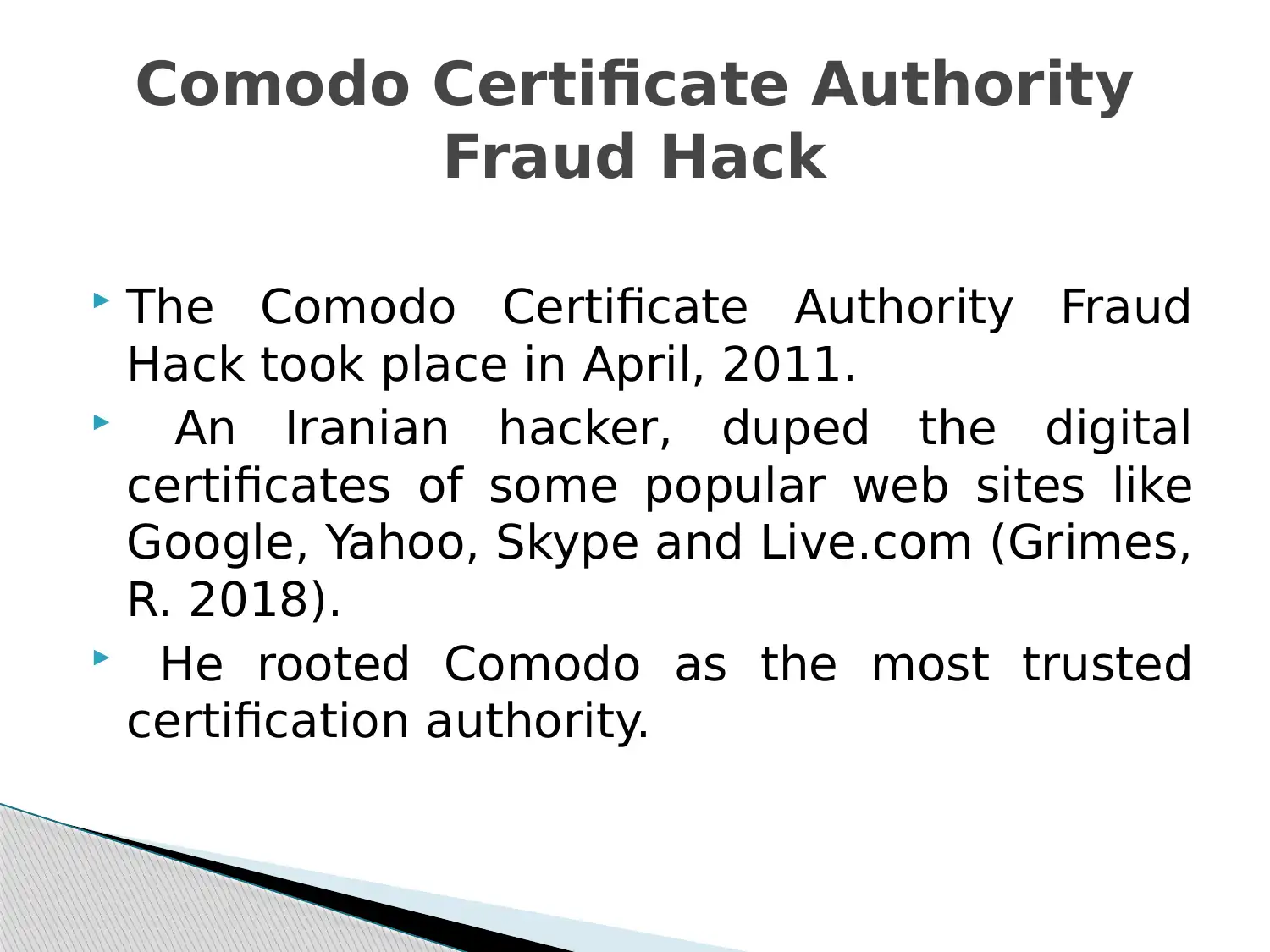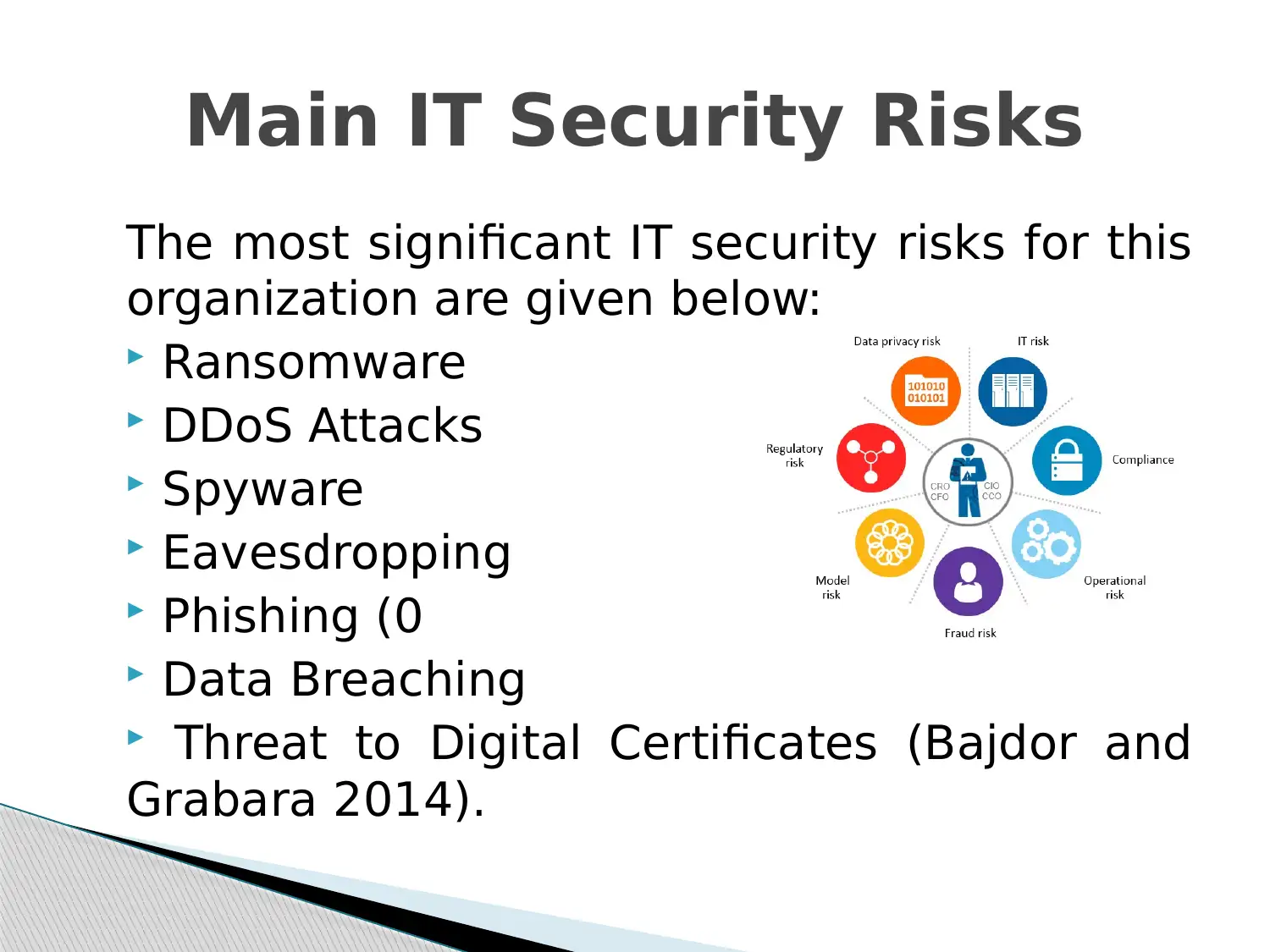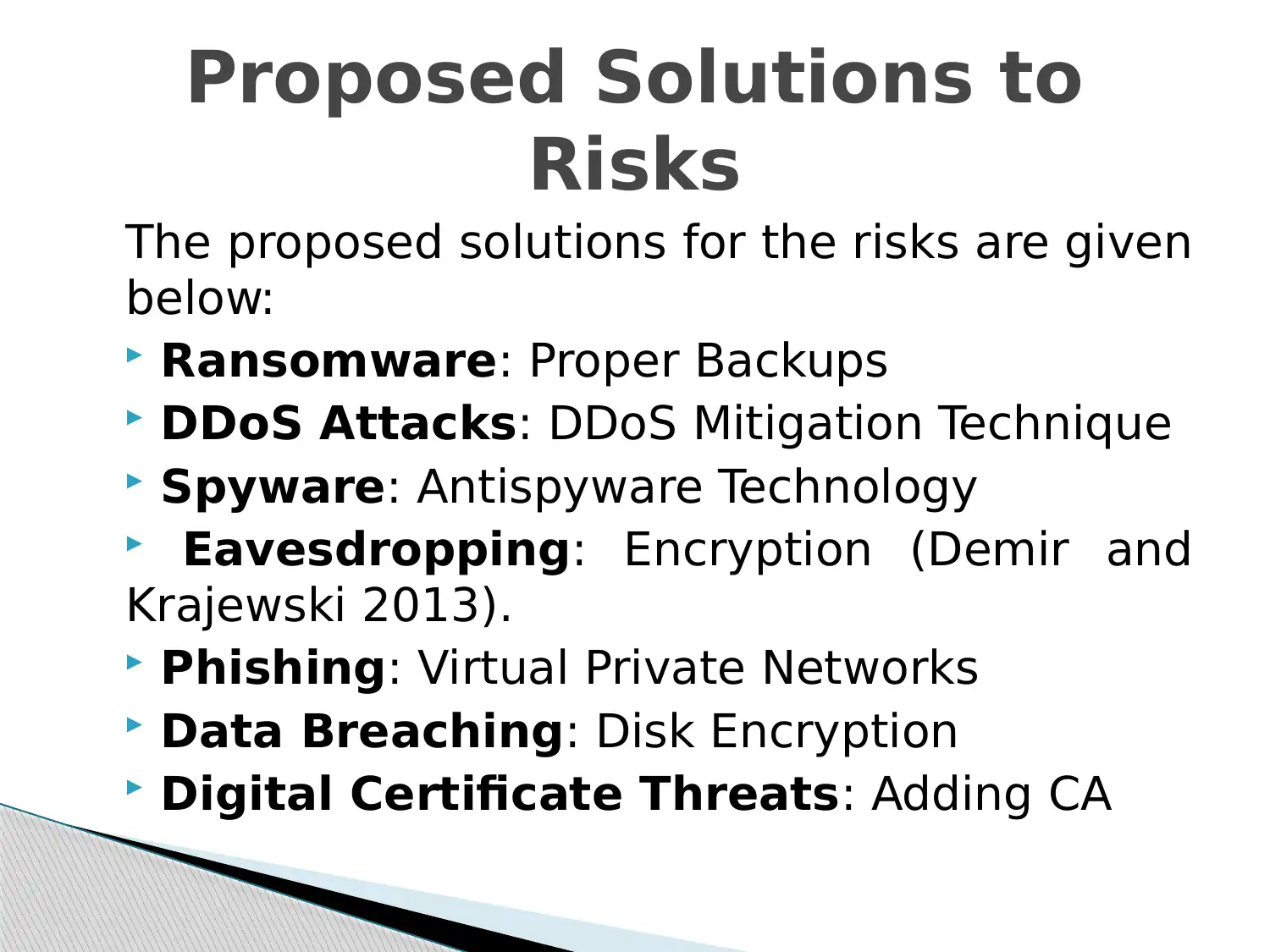University Network Security Technical Report: Communications Analysis
VerifiedAdded on 2023/06/08
|8
|396
|52
Report
AI Summary
This technical report focuses on network communications security, addressing the Comodo Certificate Authority fraud hack and various IT security risks faced by organizations, particularly those handling sensitive data. The report identifies key threats such as ransomware, DDoS attacks, spyware, eavesdropping, phishing, data breaches, and threats to digital certificates. It proposes solutions including proper backups, DDoS mitigation techniques, anti-spyware technology, encryption, virtual private networks, disk encryption, and CA recommendations. The report also highlights recommendations for preventing IT security risks, such as using encryption on WAP, hiding SSD, and changing passwords periodically. References to supporting literature are also included. The assignment is for SIT735: Network Communications Security.
1 out of 8












![[object Object]](/_next/static/media/star-bottom.7253800d.svg)